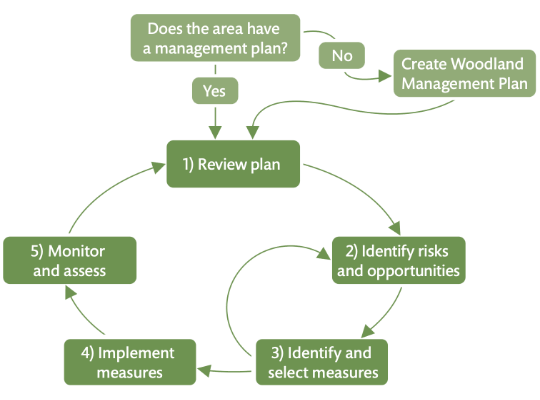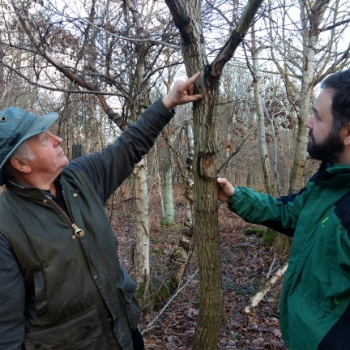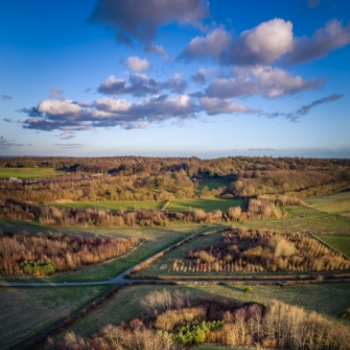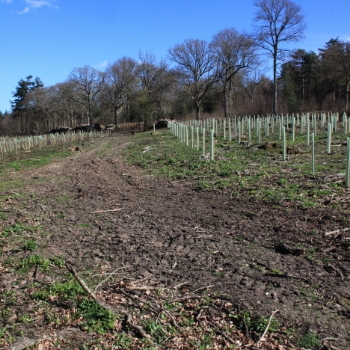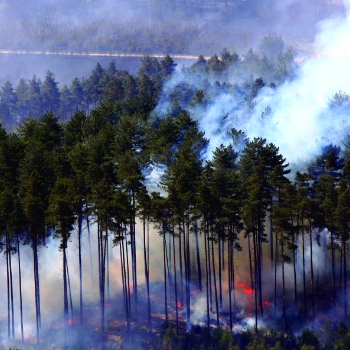England
The climate in England is changing, and these changes will impact on England’s trees, woodland, and forests.
Many climate change impacts are already being observed in woodlands across the country; for example in the south-east oak typically comes into leaf a month earlier now than in the 1950s.
The main climate change risks to England’s forests are summarised here, along with resources to support adaptation. We also provide information about England’s climate change policies, forest governance, and grant support.
Climate change projections
The climate in England has already changed, with further changes projected. Seasonal rainfall patterns are changing, and temperatures are increasing, with hotter-drier summers and milder-wetter winters. Extreme weather events, including storms, drought, and flooding, are also becoming more frequent.
Climate change impacts
These changes in climate will have a range of impacts on forestry in England, including:
- Regional changes in tree species suitability.
- Drier and warmer summers, resulting in an increase in soil moisture deficits, which will reduce tree growth in areas of south, central and eastern England.
- Warmer growing seasons and rising CO₂ concentrations will increase growth and timber production where other factors, such as soil moisture and nutrient availability, are non-limiting.
- Changes in the seasonality of rainfall observed over the past century will continue and intensify. This will lead to wetter autumn and winter periods and cause greater water table fluctuations. For trees, on some soils this will limit rooting depth and consequently reduce tree stability which will increase the risk of wind damage on exposed sites.
- We expect an increase in average wind speeds this century along with an increase in the frequency of storm events, increasing the risk of damage to trees, woodlands and forests. The risk is higher in the west of the country, on exposed sites at higher elevations, and on wet sites, due to reduced anchorage.
- Warming climate conditions, particularly warmer winters, will allow many tree pests and pathogens to expand their range and complete more growth cycles per year, increasing the risk of tree disease and pest outbreaks.
- Climate change risks can interact and increase the likelihood of secondary impacts, such as drought, wildfire and tree health threats, or wind throw and pest outbreaks. Read our case studies to find out how landowners are increasing resilience.
Adaptation
A range of adaptation measures are available and should be selected as part of a comprehensive assessment of climate change risks using the 5-step adaptation framework to manage them.
Forest Research provides an overview of climate change impacts and adaptation measures for England’s woodlands. Species suitability will change, and it is therefore important to consider the planting stock in adaptation to climate change. Information on species suitability under future climate scenarios is available on the Forest Research website for England alongside a climate matching tool.

Forest governance
In England, the Forestry Commission is the government department responsible for protecting, expanding and promoting the sustainable management of woodlands. It is a non-ministerial department supported by Forestry England, who manage the public forest estate, and Forest Research.
In 2019 the Forestry Commission published their first climate change and forestry position statement which explains the urgency of taking action in response to climate change and that planting and managing trees, forests and woodlands so that they are fit for the future is part of the nation’s response to climate change.
They have since produced climate change management guidance ‘Managing England’s woodlands in a climate emergency’. This guide provides practical advice to landowners on ways they can better manage their woodland to combat the effects of climate change.
The Forestry Commission’s guide Responding to the climate emergency with new trees and woodlands aims to help local authorities and landowning businesses achieve net zero.
The Forestry Commission (including Forestry England and Forest Research) published its third Adaptation Reporting Power report in 2022, which sets out the risks to its functions and the programme of work to address them.
Policy
The UK Government’s Third National Adaptation Programme (NAP3) outlines the actions the government and others will take to adapt to climate change. ‘Powering up Britain: the net zero growth plan’ and the Carbon Budget Delivery Plan outline the latest five-year carbon budget and longer-term vision for a decarbonized economy in 2050, as required under The Climate Change Act 2008 (2050 Target Amendment) Order 2019.
Grants
Details about UK Government woodland grants and incentives is available from the Forestry Commission.
Case studies
Adaptation measures have helped enhance resilience to both pests and diseases and climatic stresses in this 80 hectare SSSI woodland in the Midlands. Watch video
A community woodland project in Kent has enabled the comparison between new two woodland areas planted in 2006, one of which was designed to address threats of climate change.
Pioneering private woodland owner Mr Sclater created a 3ha plantation in Sussex in 2017 that is designed be resilient to climate change in 2217! Watch video
A range of adaptation measures were implemented on a public forest estate on the Hampshire/Surrey border to help combat the threat of more frequent drought episodes. Watch video
Following a ten-day fire control operation in 2011, increasing resilience to wildfire became a priority for this large mixed forest in Berkshire.


